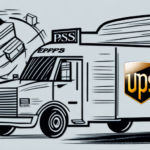Comparing Package Carrier Services: Which One Is Right for You?
Sending packages and parcels worldwide is now a routine task for businesses and individuals. However, with the plethora of package carrier services available, choosing the right one can be daunting. Factors such as shipping rates, delivery times, quality of service, and international shipping options are crucial in making the right choice. This article explores these factors in detail to help you make an informed decision about the best package carrier service for your needs.
Key Factors to Consider When Choosing a Package Carrier
Shipping Rates and Delivery Times
Comparing shipping rates and delivery times is fundamental. Different carriers offer varying rates based on package size, weight, and destination. For instance, FedEx and UPS provide expedited delivery options at higher costs, while services like USPS offer more affordable rates for standard shipping.
Quality of Service
Reliability and customer service are paramount. Review customer feedback on platforms such as TrustRadius or Sitejabber to gauge a carrier’s reputation. High-quality service ensures timely deliveries and effective resolution of any issues.
International Shipping Options
If you need to send packages overseas, ensure the carrier offers comprehensive international shipping solutions. Carriers like DHL and Royal Mail specialize in international logistics, providing reliable customs clearance and tracking services.
Package Handling Capabilities
Different carriers have varying restrictions on package size, weight, and type. For example, if you’re shipping fragile items, choose a carrier known for handling delicate packages securely, such as FedEx.
Types of Package Carriers
Postal Services
Postal services like USPS are cost-effective for small packages and offer extensive nationwide coverage. They are ideal for standard shipping needs with reliable delivery times.
Courier Services
Courier services such as UPS and FedEx provide expedited shipping options, catering to businesses and individuals who require fast and reliable delivery.
Freight Carriers
For large and heavy shipments, freight carriers like Maersk offer cost-effective solutions for bulk shipping. They are suitable for businesses with substantial shipping volumes.
Benefits of Using Package Carrier Services
Convenience and Reliability
Package carriers offer door-to-door delivery, saving time and effort. Reliable services ensure that packages arrive on time and in good condition.
Shipping Insurance and Tracking
Most carriers provide shipping insurance and real-time tracking, offering peace of mind by allowing senders and recipients to monitor package status.
Cost-Effectiveness
Competitive pricing and volume discounts make package carrier services a cost-effective choice for both individuals and businesses. Utilizing flat-rate boxes and bulk shipping can further reduce costs.
Comparing Shipping Rates and Delivery Times
Rate Structures
Understand different rate structures: some carriers offer flat-rate shipping for packages under a specific weight, while others base their charges on weight and destination. For example, USPS Flat Rate boxes provide predictable pricing.
Delivery Speed Options
Evaluate the delivery speed options available. Expedited services like FedEx Overnight are faster but more expensive, whereas standard shipping options are more affordable but take longer.
Carrier Reliability
Research carrier reliability by examining metrics such as on-time delivery rates and incidence of lost or damaged packages. Independent reports from J.C. Chandler can provide insights into carrier performance.
Evaluating Quality of Service
Customer Reviews and Ratings
Analyze customer reviews on trusted platforms to assess carrier performance. High ratings in reliability, customer service, and delivery accuracy are indicators of quality service.
Service Level Agreements (SLAs)
Review the carrier’s SLAs to understand their commitment to delivery times and service quality. Strong SLAs ensure accountability and service reliability.
Specialized Handling
For specific package types, such as perishables or hazardous materials, ensure the carrier has the expertise and proper handling procedures in place.
Choosing the Best Package Carrier for Your Business
Assessing Shipping Volume and Budget
Determine your shipping volume and budget constraints. High-volume businesses may benefit from negotiated rates and dedicated account managers offered by carriers like UPS.
Reliability and Customer Support
Select carriers with a proven track record of reliability and responsive customer support. Efficient issue resolution is crucial for maintaining business operations.
Additional Services
Consider additional services such as package tracking, insurance, and automated shipping solutions. These services enhance operational efficiency and customer satisfaction.
International Shipping Considerations
Customs Clearance and Documentation
Ensure the carrier provides robust customs clearance services and handles necessary documentation efficiently to avoid delays in international shipments.
Transit Times and Costs
Evaluate transit times and associated costs for international destinations. Carriers like DHL offer tailored solutions for different regions and delivery speed requirements.
Regulatory Compliance
Understand the regulatory requirements of destination countries. Choose carriers with expertise in international regulations to ensure compliance and smooth delivery processes.
Tips for Reducing Shipping Costs
Bulk Shipping and Negotiated Rates
Leverage bulk shipping and negotiate rates with carriers to achieve significant cost savings. High-volume shippers often receive discounted rates.
Optimizing Packaging
Use appropriately sized packaging to minimize dimensional weight charges. Efficient packaging reduces shipping costs and the risk of damage.
Alternative Shipping Methods
Explore alternative shipping methods such as ground shipping instead of air for non-urgent deliveries to lower costs.
Choosing the Right Packaging Materials
Durability and Protection
Select sturdy packaging materials that protect contents during transit. Use bubble wrap, foam inserts, and reinforced tape for added protection.
Environmental Considerations
Opt for recyclable or biodegradable packaging materials to minimize environmental impact. Sustainable packaging practices resonate with eco-conscious customers.
Cost-Effective Solutions
Balance cost and protection by choosing packaging that provides adequate safeguarding without incurring excessive costs.
Understanding Insurance and Liability Coverage
Carrier Insurance Policies
Review carrier insurance policies to understand coverage limits and exclusions. Ensure high-value items are adequately insured during transit.
Additional Insurance Options
Consider purchasing additional insurance for valuable or fragile items. Third-party insurance providers can offer extended coverage beyond carrier policies.
Liability and Claims Process
Understand the liability terms and claims process of each carrier. Efficient claims handling is essential for resolving issues related to lost or damaged packages.
The Future of Package Carrier Services
Technological Innovations
Emerging technologies like drones and autonomous vehicles are revolutionizing package delivery. Companies like Amazon are investing heavily in drone delivery systems to enhance efficiency.
Artificial Intelligence and Automation
AI and machine learning are improving route optimization, predictive maintenance, and customer service automation, leading to faster and more reliable deliveries.
Sustainability Initiatives
Carriers are increasingly adopting sustainable practices, such as electric delivery vehicles and eco-friendly packaging, to reduce their environmental footprint.
Conclusion
Choosing the right package carrier service is a critical decision that impacts both personal and business logistics. By carefully considering factors like shipping rates, delivery times, quality of service, and international shipping capabilities, you can select a carrier that meets your specific needs. Staying informed about industry trends and leveraging cost-saving strategies will further enhance your shipping efficiency and reliability.




















